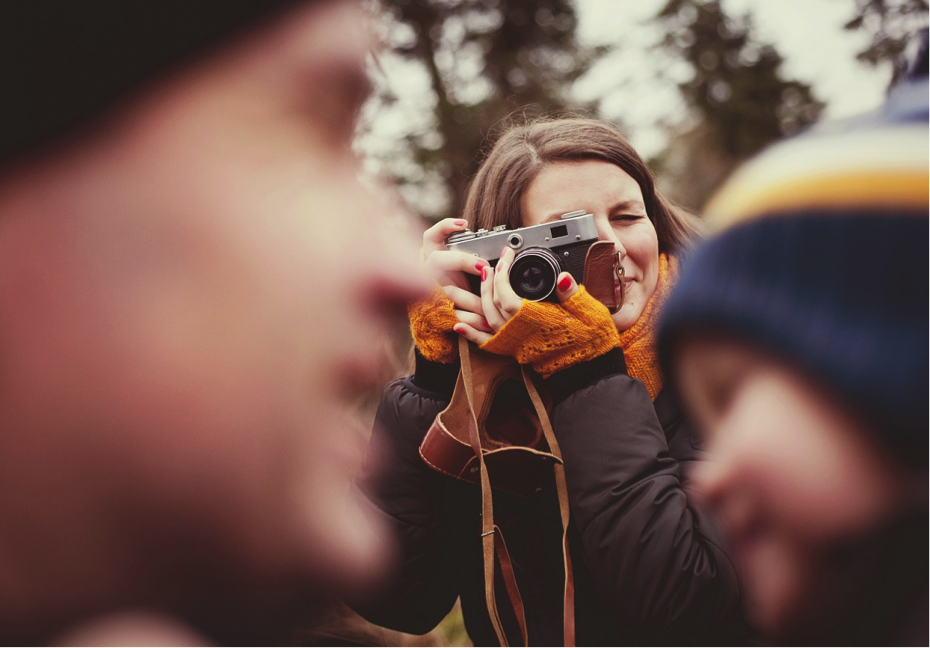Shooting better family portraits

The family portrait is a shot most photographers will attempt at some point in their lives. Whether it’s a professional shoot you’ve taken for a commission, or a self-portrait on a tripod, mastering the photo is a case of situational awareness and coming prepared. The following tips will teach you everything you need to know about getting the right shot.
Wider apertures
Opting for a wider aperture (smaller F stop number) is generally always better when shooting a portrait of a few people. This is because the wider the aperture, the more you can separate your subject from your background. In portraiture, the focus is always on the subjects – so this is a natural move to make. However, beginners relying on manual or shutter priority might not be aware.
Be careful though, as shooting larger groups with a wide aperture can create issues where some people are more in focus than others. With that in mind, experiment with different apertures once you’re shooting more than four people.
Make things natural
Not the most technical or photography-centric advice, but ensuring a shot is natural can help turn a portrait from average into exceptional. Don’t suppress natural giggles, smiles and smirks. A family is likely to react in lots of different ways when the camera is pointed at them – your job is to capture these natural reactions and make the most of them. Candid trumps posed every time.

To capitalise on these natural reactions you’ll need a fast shutter speed, so you’ll need plenty of light in the room in order to set your shutter speed to something like 1/30 sec.
Fill the frame
Break away from traditional group shots and get up close. If you fill the frame with your subjects, such as an intimate portrait of father and daughter or mother and son, your image will convey their relationship and feel more personal. It can be helpful to encourage people to get closer together to create intimacy, as some families will naturally linger apart.
When you’re up close, you can wait to see a natural moment, such as a knowing look or smile, and then use a high shutter speed and diffused flash to freeze the moment.
Lighting
Indoors: Lighting is virtually everything when it comes to family shots. As well as composing the actual photo, you’ll need to constantly assess the lighting levels. Indoors, the best way to get light is through larger windows and a reflector so that you can make the most of natural light.
In lower light, you’ll need to set your flash up. Make sure you take test shots to see how dark the image is. Set a wider aperture and higher ISO to compensate – but be aware of noise. Shooting with automatic flash will flatten the image – so try and experiment and get a balance between ambient light and fill flash.
Outdoors: Depending on the lighting levels, you’ll want to shoot in the shade or with the sun behind you so you don’t end up throwing out the levels. However, you can also flip this idea completely on its head and use the sun behind your subject to create a rimlight around their hair and features.
You can use flash to add more impact to your outdoor shots as well. Setting your flash to auto will probably flatten the image, even outdoors, so adjust it and use a short burst of fill flash to pick out your subject without looking too harsh.

Dress to impress?
When it comes to composition, you’ll probably be asked by a family you’re shooting what they should wear. As with most aspects of life, dressing to feel confident and comfortable is key – so encourage them to wear things that make them feel comfortable.
If you’d like a more official portrait, it can be useful for a family to wear two sets of clothing throughout the shoot. Start them in the casual clothing so they’re comfortable with your shooting methods and you get familiar, then switch into more formal clothing but keep things relaxed.
Photographing babies
If you’re shooting single portraits, such as shots of children, you’ll have to get in closer and set the focus on their closest eye. A macro lens can be helpful for getting close shots of children and babies, especially if you’re trying to capture detail in their face.
Bringing the parents into the portrait can be important, depending on the goals of the shot. A dark background with well-lit mother and baby will capture a beautiful moment that will be treasured forever.
Ultimately then, shooting better family portraits is a matter of knowing how to get the most from natural light and being a good communicator. Make people relaxed, get in close and take photos that will be hung around their homes for years to come. If you’ve got any portraiture tips, be sure to leave a comment and let us know your favourite.
- By Andi Thomas
- 3 Jun 2016





























































